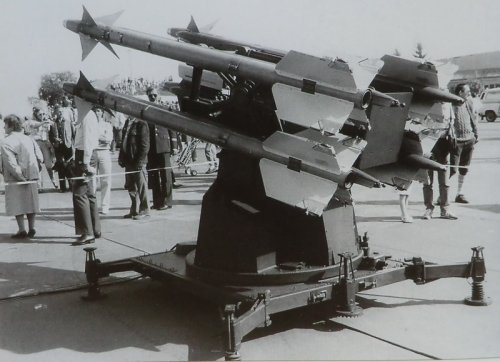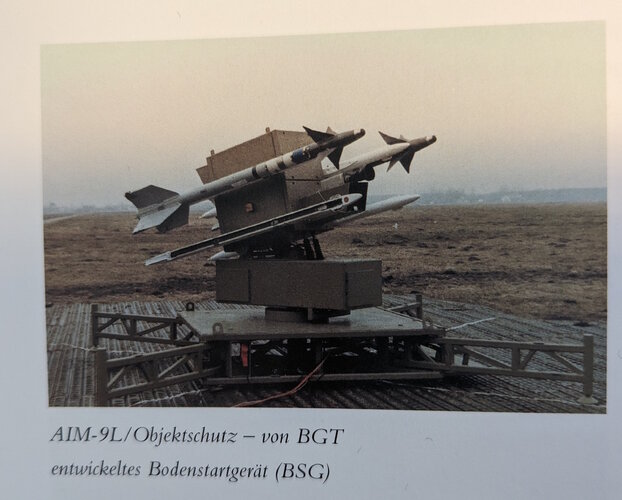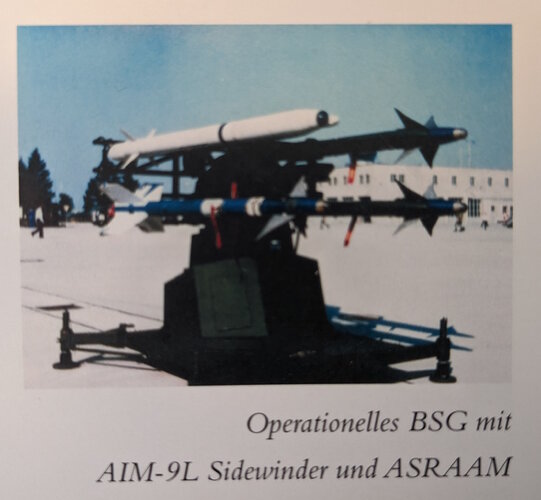In 1982, BGT received the first of several contracts from the BWB for the "Experimental demonstration of the usability of the AIM-9L Sidewinder air-to-air missile in air force object defence". BGT acted as an unofficial general contractor and carried out investigations into the missile's launch behaviour from the ground as well as firing range calculations. BGT also designed a simple experimental ground launcher with four LAU-7/A aircraft launchers that could be adjusted for side and height, which was built by Wehrtechnische Dienststelle 81 in Greding according to BGT's plans. The device, known as the BSG, was fitted with a television camera for target acquisition and search head instruction. A powerful radar fire control device such as the Skyguard from Contraves, which BGT had proposed, was not an option for the Luftwaffe for cost reasons. The BSG was aimed manually via a separately developed, remote control unit and roughly instructed on the target to be engaged. The fine guidance was carried out with the IR seeker of the AIM-9L Sidewinder.
In 1983, the BSG was used to carry out target-acquisition tests in Manching against a variety of targets, followed by the first unguided launching shots in the Meldorf Bay. This was followed in 1984 by guided shots from the Barbara jack-up platform in the Baltic Sea. In the same year, the German Air Force approved the tactical requirement. The successful target-acquisition tests and shots from the experimental launcher led to the company Kuka, experienced in the construction of gun mounts, being commissioned by the BWB to develop and build three ground launchers. BGT was responsible for integrating the AIM-9L Sidewinder into the operational BSG and carrying out the final test firing on Crete in 1986. With a series of successful firings, BGT succeeded in proving that the AIM-9L Sidewinder, with only minor, easily removable adaptations, is also suitable for firing from the ground in addition to the air-to-air role and thus for air force object protection. The guided firings on Crete, which were carried out with the operational ground launcher and target briefing by the Skyguard radar fire control system from Contraves, resulted in direct hits and the destruction of the target drones in all five cases.
The paradox of the AIM-9L/Objektschutz project, which was also disrespectfully referred to in air force circles as the "Russian solution" due to the minimal funding available, was that it was not allowed to cost more than DM 20 million, including the entire development and procurement of 50 ground launchers. The Roland-Patriot agreement concluded between Germany and the USA in 1984 ultimately prevented the introduction of AIM-9L/object protection into the Bundeswehr.



